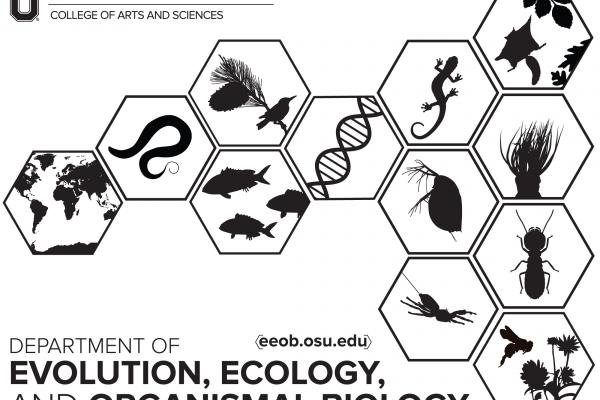December 22, 2017
Publications by EEOB faculty December 1 - December 31

The Historical Case for and the Future Study of Antibiotic-Resistant Scrub Typhus
Daryl J. Kelly, Paul A. Fuerst, and Allen L. Richards. Tropical Medicine and Infectious Disease 2017, 2(4), 63; doi:10.3390/tropicalmed2040063
Abstract
Scrub typhus is an acute, and sometimes fatal, human febrile illness, typically successfully treated using chloramphenicol or one of the tetracyclines. Over the past several years, descriptions of strains of Orientia tsutsugamushi with reduced susceptibility to antibiotics have appeared. Because case-fatality ratios approached 50% during the pre-antibiotic era, antibiotic-resistant scrub typhus is concerning. Herein, we review the data on resistant scrub typhus, describe how the theoretical existence of such resistance is affected by interpretation of treatment outcomes, and propose a plan to further identify whether true drug resistance is present and how to deal with drug resistance if it has evolved. Limited resistance is not unambiguous, if present, and antibiotic resistance in scrub typhus is not a dichotomous trait. Rather, evidence of resistance shows a continuous gradation of increasing resistance. The availability of genomes from isolates of O. tsutsugamushi allows the search for loci that might contribute to antibiotic resistance. At least eighteen such loci occur in all genomes of O. tsutsugamushi examined. One gene (gyrA) occurs as a quinolone-resistant form in the genome of all isolates of O. tsutsugamushi. At least 13 other genes that are present in some members of the genus Rickettsia do not occur within O. tsutsugamushi. Even though reports of scrub typhus not responding appropriately to chloramphenicol or a tetracycline treatment have been in the literature for approximately 23 years, the existence and importance of antibiotic-resistant scrub typhus remains uncertain.
Evolutionary transition from blood feeding to obligate nonbiting in a mosquito
William E. Bradshawa, Joshua Burkhart, John K. Colbourne, Rudyard Borowczak, Jacqueline Lopez, David L. Denlinger, Julie A. Reynolds, Michael E. Pfrender, and Christina M. Holzapfel. 2017. Proceedings of the National Academy of Sciences of the United States of America. doi: 10.1073/pnas.1717502115
Abstract
The spread of blood-borne pathogens by mosquitoes relies on their taking a blood meal; if there is no bite, there is no disease transmission. Although many species of mosquitoes never take a blood meal, identifying genes that distinguish blood feeding from obligate nonbiting is hampered by the fact that these different lifestyles occur in separate, genetically incompatible species. There is, however, one unique extant species with populations that share a common genetic background but blood feed in one region and are obligate nonbiters in the rest of their range: Wyeomyia smithii. Contemporary blood-feeding and obligate nonbiting populations represent end points of divergence between fully interfertile southern and northern populations. This divergence has undoubtedly resulted in genetic changes that are unrelated to blood feeding, and the challenge is to winnow out the unrelated genetic factors to identify those related specifically to the evolutionary transition from blood feeding to obligate nonbiting. Herein, we determine differential gene expression resulting from directional selection on blood feeding within a polymorphic population to isolate genetic differences between blood feeding and obligate nonbiting. We show that the evolution of nonbiting has resulted in a greatly reduced metabolic investment compared with biting populations, a greater reliance on opportunistic metabolic pathways, and greater reliance on visual rather than olfactory sensory input. W. smithii provides a unique starting point to determine if there are universal nonbiting genes in mosquitoes that could be manipulated as a means to control vector-borne disease.
